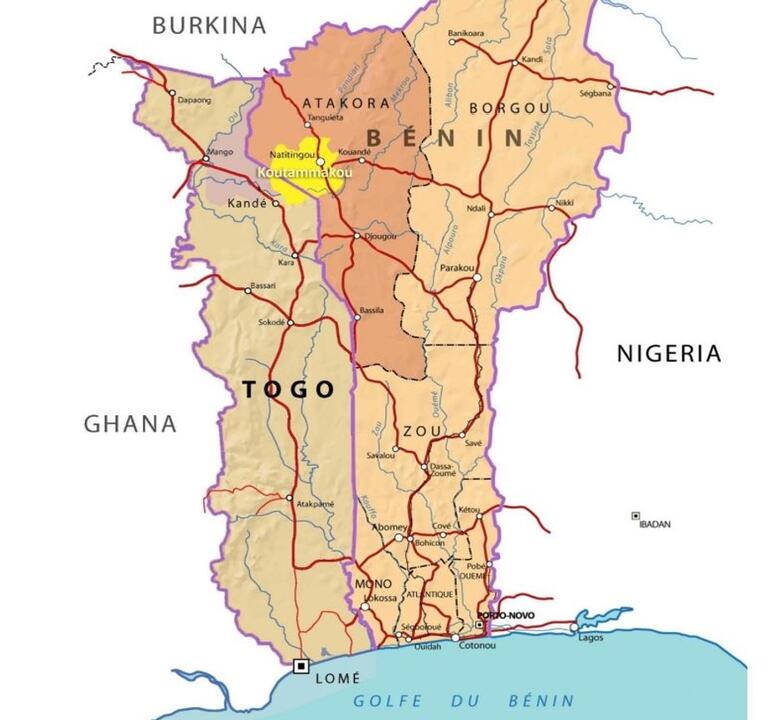
Koutammakou, Land of the Batammariba, is located in West Africa, and straddles the border between Benin and Togo. The Batammariba people have occupied this area for hundreds of years, arriving there during the seventeenth or eighteenth century.
The smaller section of Koutammakou, in Togo, was officially recognized as a UNESCO World Heritage site in 2004. The larger section, in Benin, is not included in the listing and has no official protection or designation.
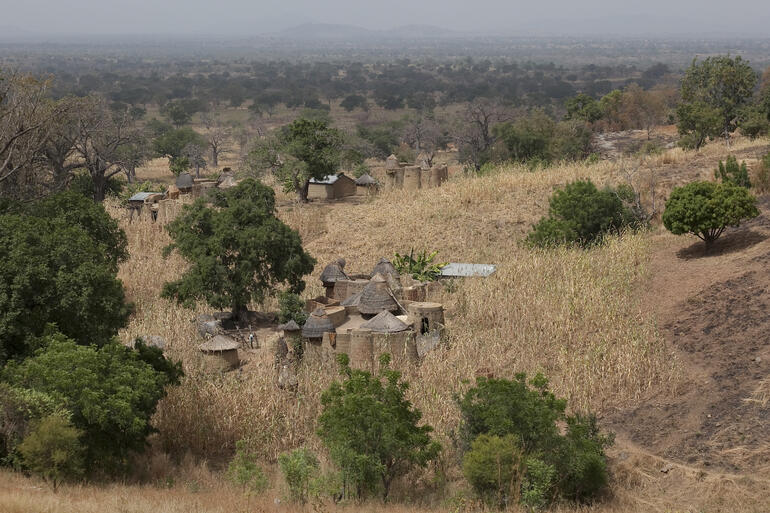
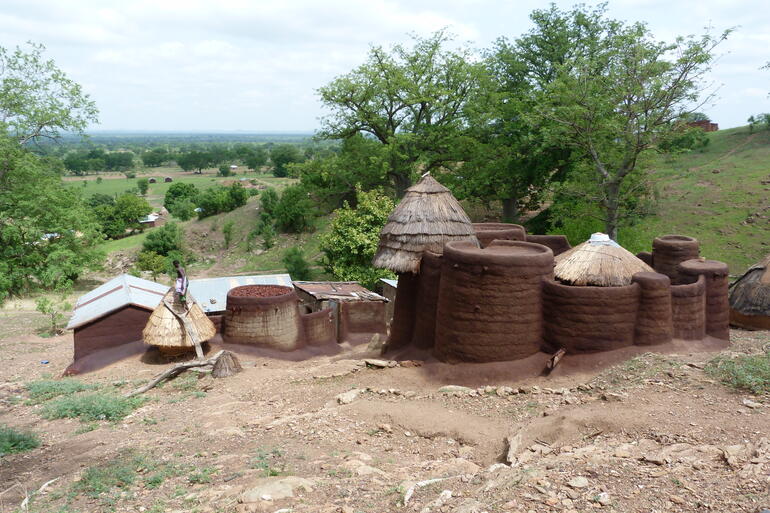
Today, challenges related to migration, population growth, urbanization, and climate change are threatening the Batammariba way of life by disrupting the perpetuation of living cultural traditions in Koutammakou.
The site was included on the 2020 World Monuments Watch to call for a new focus on the Batammariba people’s livelihoods and to address the factors that are contributing to social change for this community
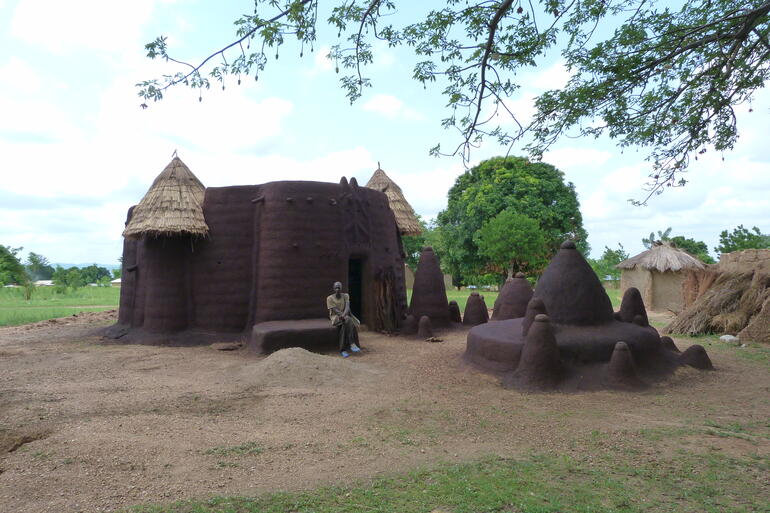
In late 2020, World Monuments Fund (WMF) launched a project to ensure the survival of one of the most distinctive and characteristic cultural artifacts of the Batammariba people: the takienta.
The living product of a distinctive cultural expression, sikien (plural of takienta) serve as houses and places of worship (their main function today).
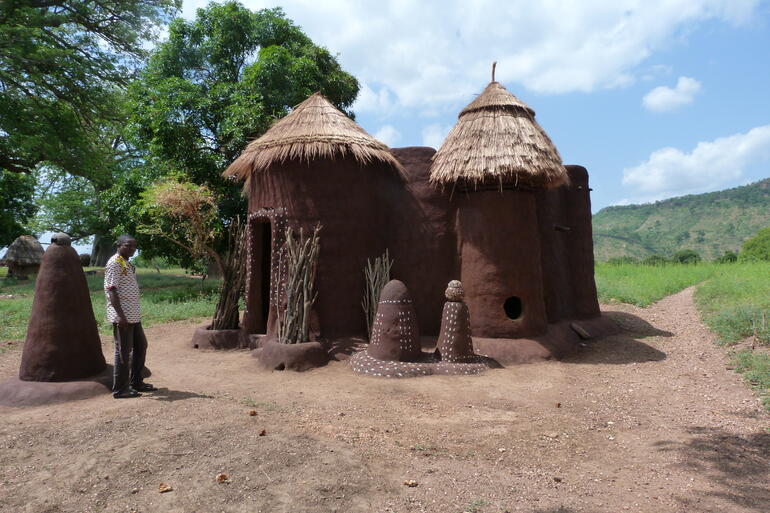
Despite variations in size and shape, sikien are built according to a single template or tradition, and specific core elements can be found in each takienta.
The houses generally consist of a cluster of mud structures—the typical takienta contains around eight—girdled together by a continuous mud wall.
The main entrance is always located on the west side, facing sunset during the winter solstice.
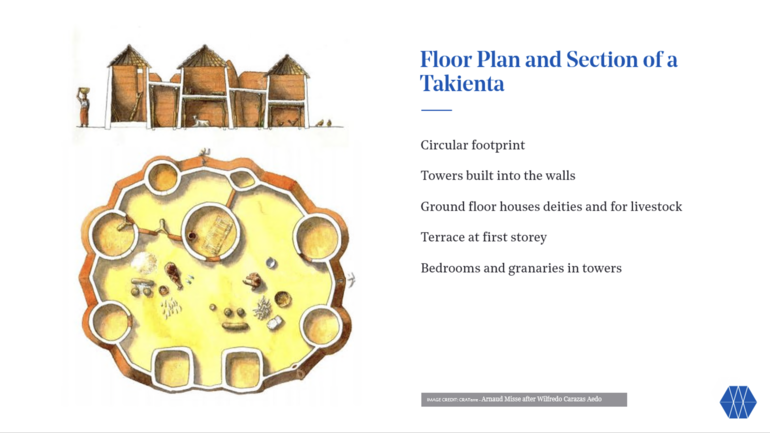
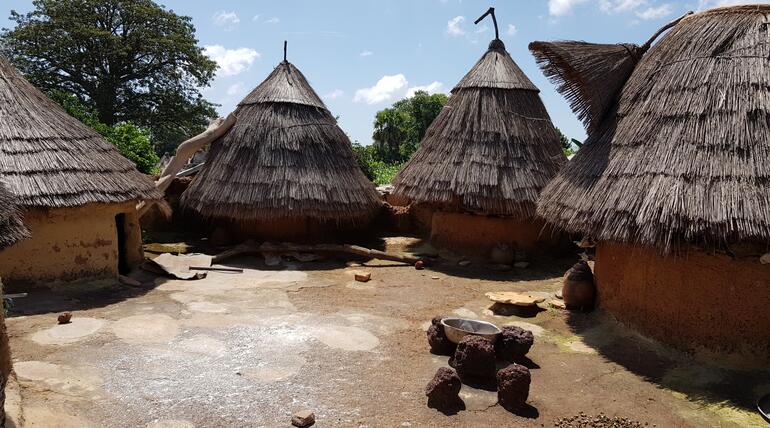
An open terrace located on the upper story of the takienta is often used for cooking and sleeping, particularly during the warmer summer months. Towers with thatched roofs can be used both as bedrooms and as granaries. The top of the thatched roofs can be removed to access the granaries below.
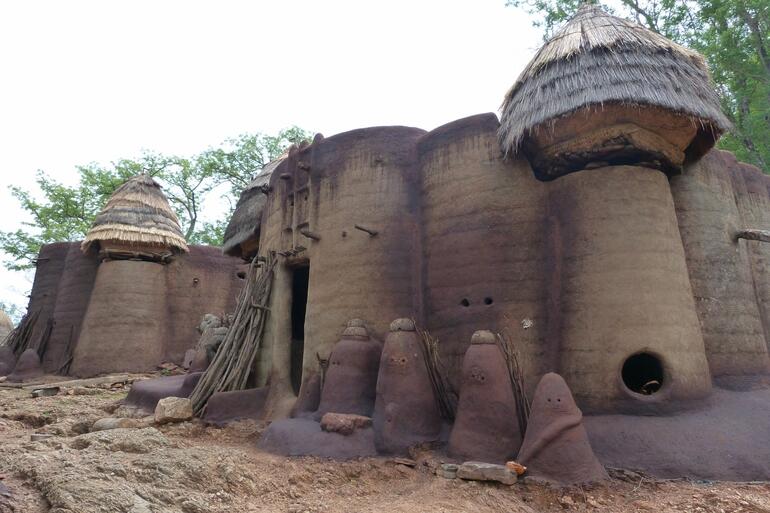
Sikien are often accompanied by a series of sculpted dome-like figures standing outside of the home, called linaba. They represent the takienta’s family or clan deities.

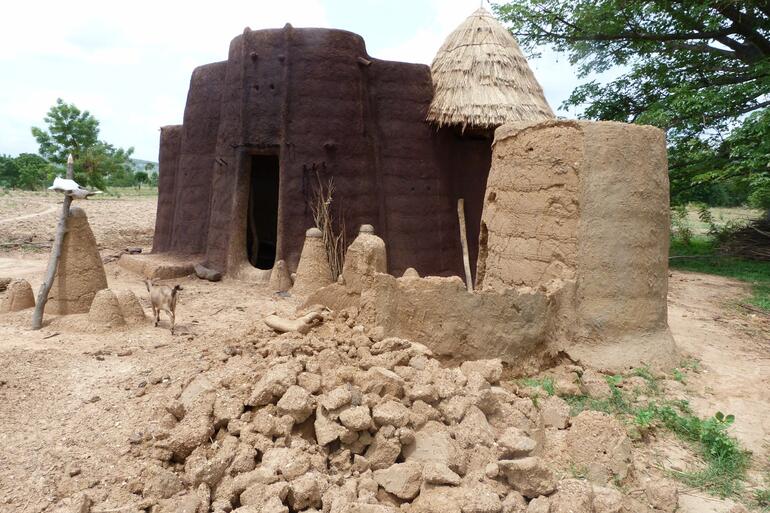
As earthen structures, the sikien are particularly vulnerable to change and need constant maintenance to endure. A takienta must be re-plastered every two years in order to remain standing for its typical lifetime of 15 years, after which it must be rebuilt.

When a takienta is given a new layer of earth plaster, that layer is treated with a solution of water mixed with the bark of a local tree, called neri. This results in the creation of a thicker, plastic-like finish on the surface of the earthen construction which helps repel water.
The neri layer is also what gives the takienta its rich coloring.
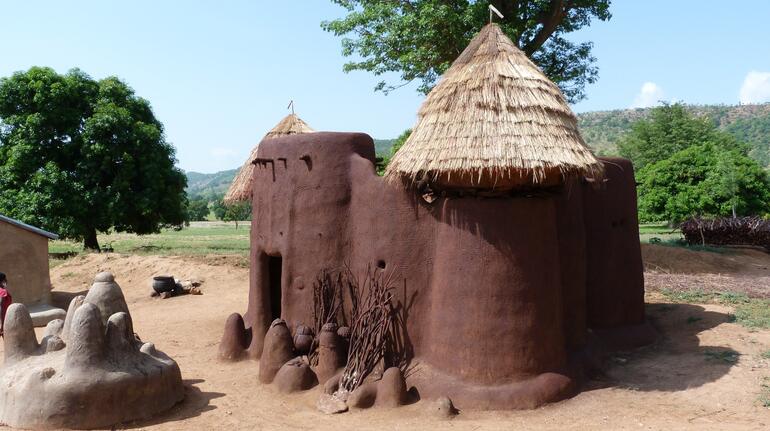
Like many earthen buildings, the takienta structure is transitory and transforms every time it is re-plastered, challenging the traditional concept of preservation as preventing or slowing change.
For this reason, WMF’s project focused on the preservation of know-how related to the takienta building process and the transmission of traditional knowledge in Koutammakou.
The project had four main components: inventory, conservation, training, and tree-planting.
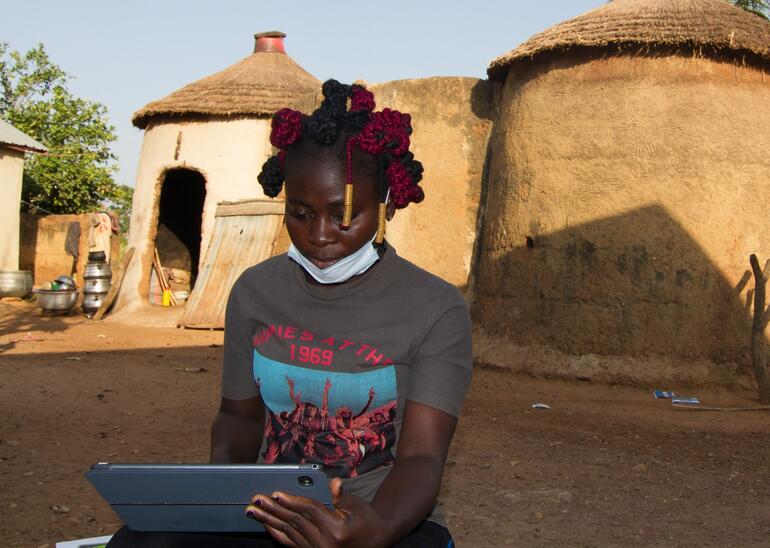
Inventory
The first aspect of the project was to create a database of historic structures in Koutammakou, building towards a trans-boundary World Heritage designation for the site across Benin and Togo.
The inventory was completed in February 2021, and revealed that there are 2,537 sikien in Benin.
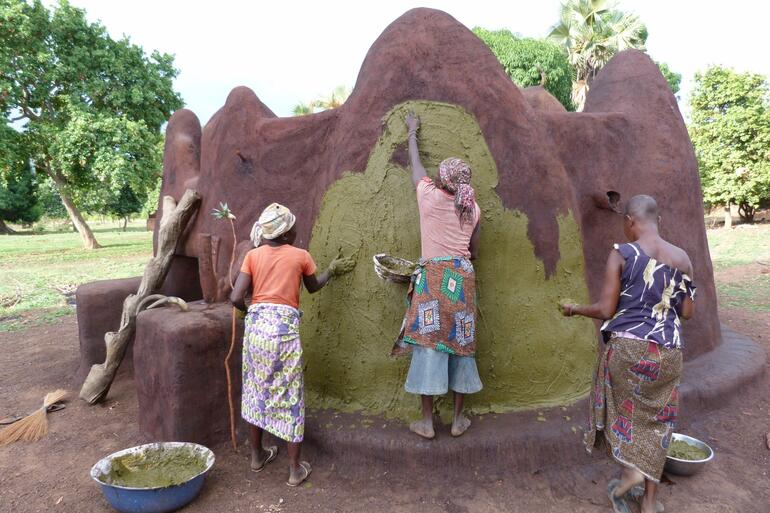
Conservation
In the second aspect of the project, WMF is working with homeowners and traditional architects, known as Otomari, to carry out conservation of over 80 sikien in Benin and Togo.
The purpose of this component of the project is to transfer knowledge—undertaking conservation work in order for younger generations to learn, ensuring the community is involved in the maintenance and construction of these structures.

Teaching in Local Schools
The third component is an education exercise carried out at local schools on both sides of the border, to engage youth in a discussion about the significance of culture.
Workshops include interactive activities in which a specialist mason builds a traditional granary, with the participation of children, in the school yard.
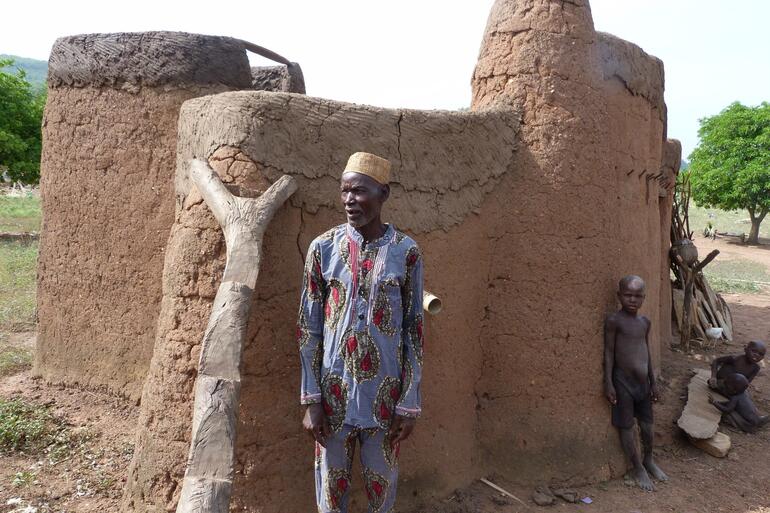
Tree Planting
The fourth and last component of the project is planting trees, the scarcest and most expensive material used in the construction of sikien. 5,000 saplings will be planted with the assistance of village committees in August 2021 during the period of heaviest rains in the area.
With the completion of this component, WMF’s project at Koutammakou came to an end in September 2021.
This presentation of WMF’s project at Koutammakou, a 2020 Watch site, was created in parallel with an On My Watch event featuring the project in July 2021. The event recording is available here for viewing.
WMF’s project to document and preserve traditional settlements in Koutammakou is made possible with support from American Express.
